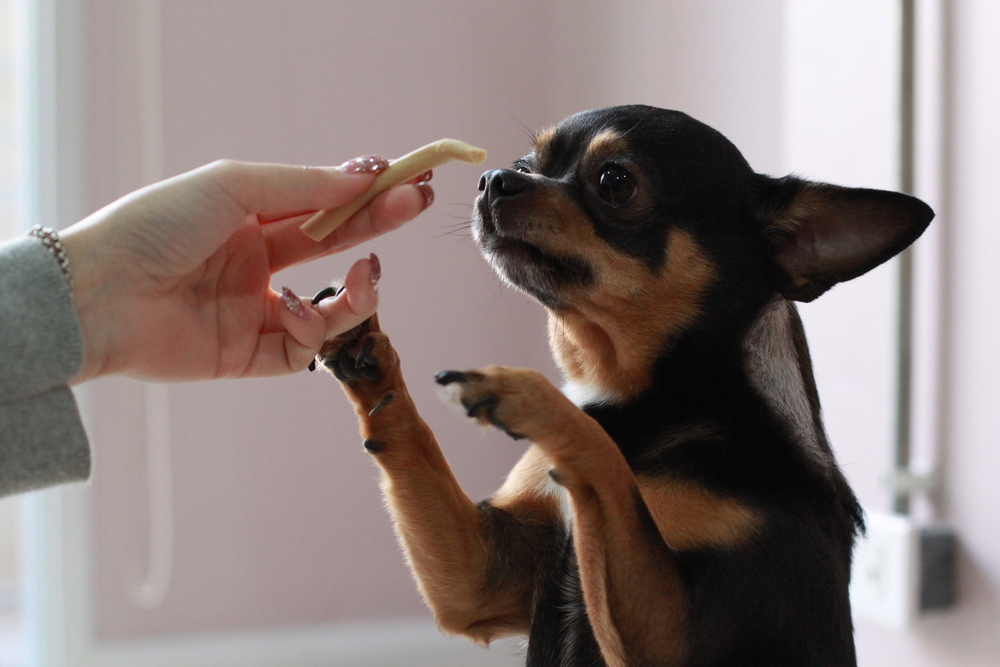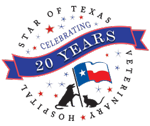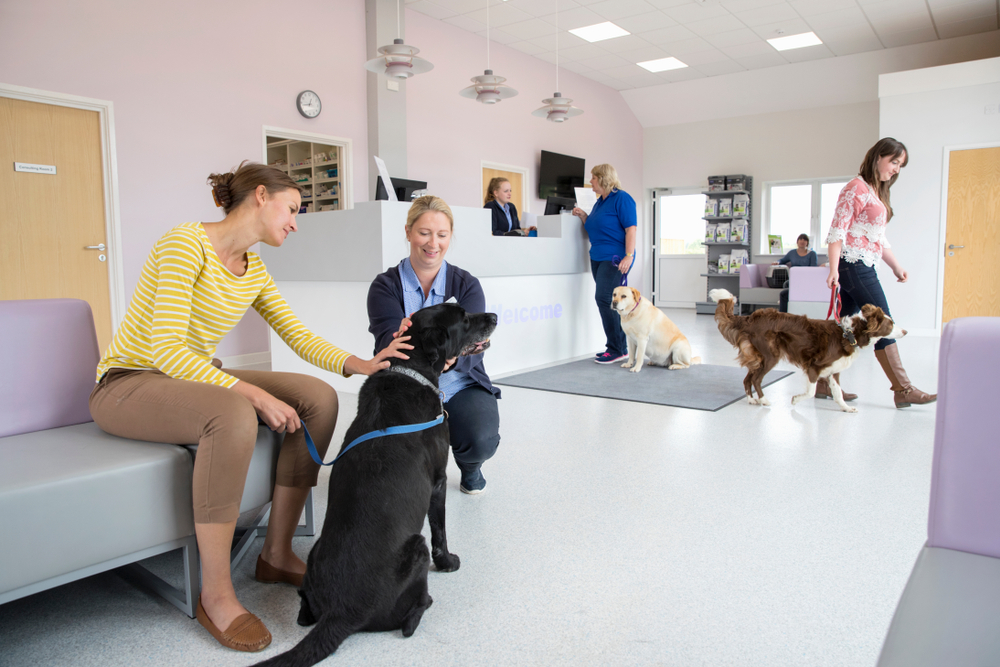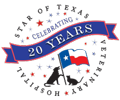Our team at Star of Texas Veterinary Hospital has always been committed to your dog’s emotional and physical well-being. When Fear Free certification became available in 2016, we knew we wanted to take this step to further improve your dog’s comfort level at our hospital. While individual certification is available, our team wanted to take the initiative to ensure we met the Fear Free Practice Certification Standards. This means our entire team and hospital facility has been assessed, and meets the requirements necessary to provide a low-stress experience for your beloved dog.
#1: Fear Free methods decrease your dog’s fear, anxiety, and stress
Your dog’s fear and anxiety is not only an emotionally distressing problem, but physiologic effects of fear, anxiety, and stress (FAS) can compromise your dog’s health, and cause inaccurate examination and laboratory findings. FAS can cause increased respiration, increased heart rate, increased blood pressure, increased cortisol levels, delayed wound healing, and stress colitis. Alleviating your dog’s anxiety and fear is key to improving their overall wellbeing.
#2: The environment of a Fear Free facility promotes calm for your dog
When your dog enters our hospital, they will be greeted with soft, soothing music and muted lighting and colors. Your pet will be provided with a bountiful array of fun, intriguing toys to engage their mind. The exam room is infused with species-specific pheromones to help naturally calm your pet. The entire team is trained to move slowly, speak in gentle, low, soothing tones, and to never pressure your pet. Your presence is welcomed in the exam room and treatment area if your dog feels calmer with you by their side.
#3: Fear Free veterinary professionals know the fear, anxiety, and stress signs in your dog
Fear Free’s scoring system helps assess your dog’s anxiety level. The ability to read your dog’s body language allows our veterinary professionals to understand what your dog is trying to say.
- Green (FAS 0-1) — Your dog is alert, excited, and slightly anxious—they are looking directly but not intensely, tail up slightly, mouth open slightly but lips loose, ears perked forward, and slight pupil dilation.
- Green (FAS 1) — Your dog is expectant and highly aroused—their tail is higher, they are looking directly, mouth closed, eyes more intense, more pupil dilation, brow tense, and hair slightly up on the back and tail.
- Yellow (FAS 2) — Your dog is nervous and mildly anxious—ears are slightly back or to the side, tail down but not completely tucked, furrowed brow, slow movements or unable to settle, fidgeting, seeking attention from owner, panting with a tight mouth, and moderate pupil dilation.
- Yellow (FAS 3) — Your dog is significantly anxious—their signs are similar to FAS 2, but their head is turning away, they refuse treats for brief moments or take treats quickly, and may be hesitant to interact, but do not completely avoid interaction.
- Red (FAS 4) — Your dog is in flight or freeze mode.
- In flight mode, their ears are back, tail tucked, they are actively trying to escape by slinking or running, with mouth closed or excessive panting, showing whites of eyes, a furrowed brow, and pupils dilated.
- In freeze mode, they are completely immobile, with pupils dilated, increased respiration, trembling, tense mouth, ear back, tail tucked, and body hunched.
- Red (FAS 5) — Your dog is in fight mode.
- They show offensive aggression by lunging forward, ears forward, tail up, hair raised on the shoulders and rump, showing only the front teeth, lips pulled forward, and dilated or constricted pupils.
- Defensive aggression is shown by raised hair on the back and rump, dilated pupils, direct eye contact, showing all teeth, body crouched and retreating, tail tucked, and ears back.
#4: Happy visits reinforce your dog’s positive association with the veterinary hospital

Happy Visits allow you and your dog to visit the hospital without any procedures being performed and no needles in sight. Your pet can learn our team members are great at belly rubs, and they give an abundance of yummy treats. Schedule a Happy Visit when your pet is hungry, and bring plenty of their favorite treats. Give them treats in the parking lot, and when they walk through the door. Let our team members give your dog treats, and if time allows, let your dog investigate the scale and receive treats for the weigh-in.
#5: Victory Visits help your dog remain calm and cooperative during specific procedures
Victory Visits are typically appropriate for dogs with a FAS score of 2 or higher. These visits proceed at a pace that is comfortable for your dog. Initial contact and handling may begin on the floor, in your lap, in the parking lot, or in your car. Victory Visits use desensitization and counterconditioning techniques to teach your dog how to participate in their veterinary care. In some cases, techniques will need to begin at home, where your dog is most comfortable. Our team will work with you and your pet to discover the best approach.
Fear, anxiety, and stress can be damaging to your dog’s emotional and physical well-being. Fear Free practices provide a stress-free environment, while allowing your pet to receive the necessary veterinary care. If you would like to schedule a Happy Visit or a Victory Visit, or if you would like to learn more about our Fear Free environment, do not hesitate to contact the team at Star of Texas Veterinary Hospital.






